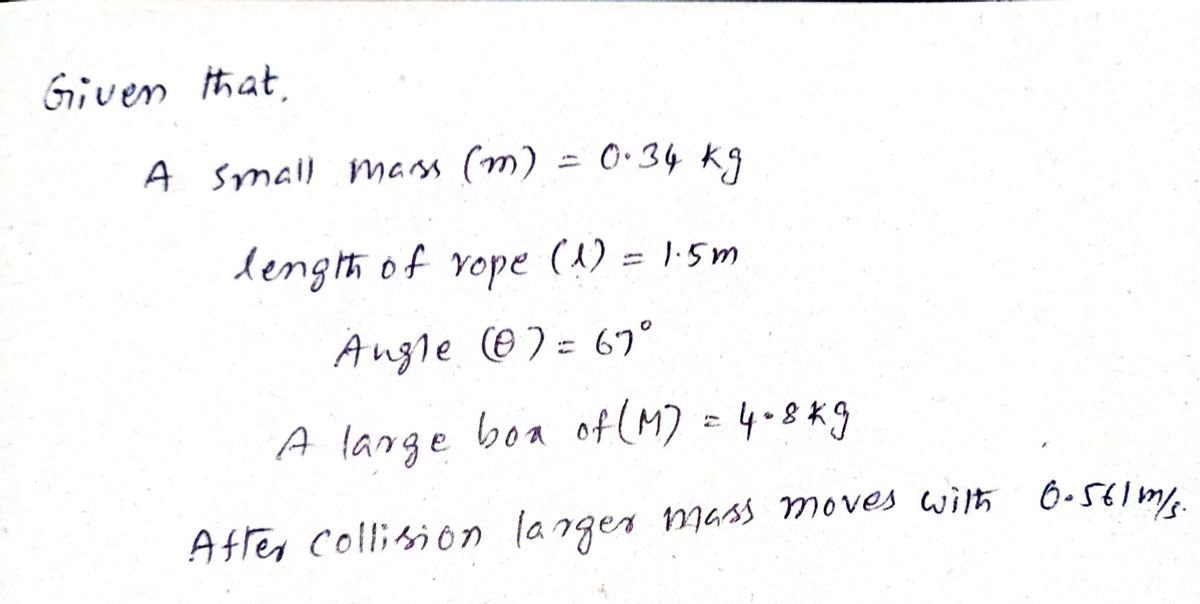There is a small mass of m = 0.340 kg attached to rope that is anchored to the ceiling. The rope is massless and has a length of 1.50 m. The small mass is pulled back so that the rope is 67.0◦ from the vertical as shown in the figure. The small mass is released and at the very bottom of its arc, the small mass strikes a large box of M = 4.80 kg which is at rest on the frictionless table. The large mass moves forward with a velocity of 0.561 m/s after the collision. What is the maximum height, measured from h0, that the small mass can achieve after the collision?
Simple harmonic motion
Simple harmonic motion is a type of periodic motion in which an object undergoes oscillatory motion. The restoring force exerted by the object exhibiting SHM is proportional to the displacement from the equilibrium position. The force is directed towards the mean position. We see many examples of SHM around us, common ones are the motion of a pendulum, spring and vibration of strings in musical instruments, and so on.
Simple Pendulum
A simple pendulum comprises a heavy mass (called bob) attached to one end of the weightless and flexible string.
Oscillation
In Physics, oscillation means a repetitive motion that happens in a variation with respect to time. There is usually a central value, where the object would be at rest. Additionally, there are two or more positions between which the repetitive motion takes place. In mathematics, oscillations can also be described as vibrations. The most common examples of oscillation that is seen in daily lives include the alternating current (AC) or the motion of a moving pendulum.
There is a small mass of m = 0.340 kg attached to rope that is anchored to the ceiling. The rope is massless and has a length of 1.50 m. The small mass is pulled back so that the rope is 67.0◦ from the vertical as shown in the figure. The small mass is released and at the very bottom of its arc, the small mass strikes a large box of M = 4.80 kg which is at rest on the frictionless table. The large mass moves forward with a velocity of 0.561 m/s after the collision. What is the maximum height, measured from h0, that the small mass can achieve after the collision?


Step by step
Solved in 2 steps with 2 images









